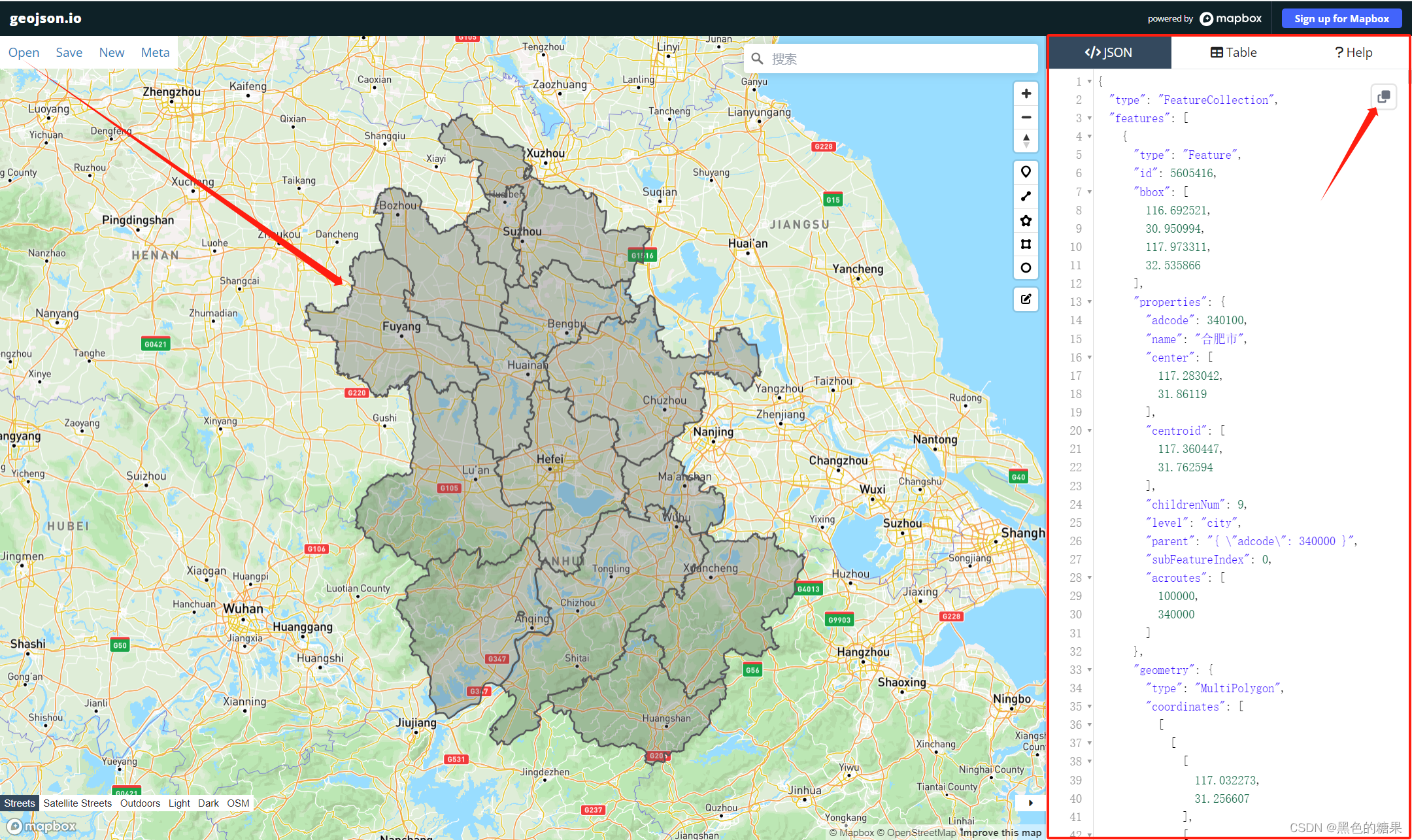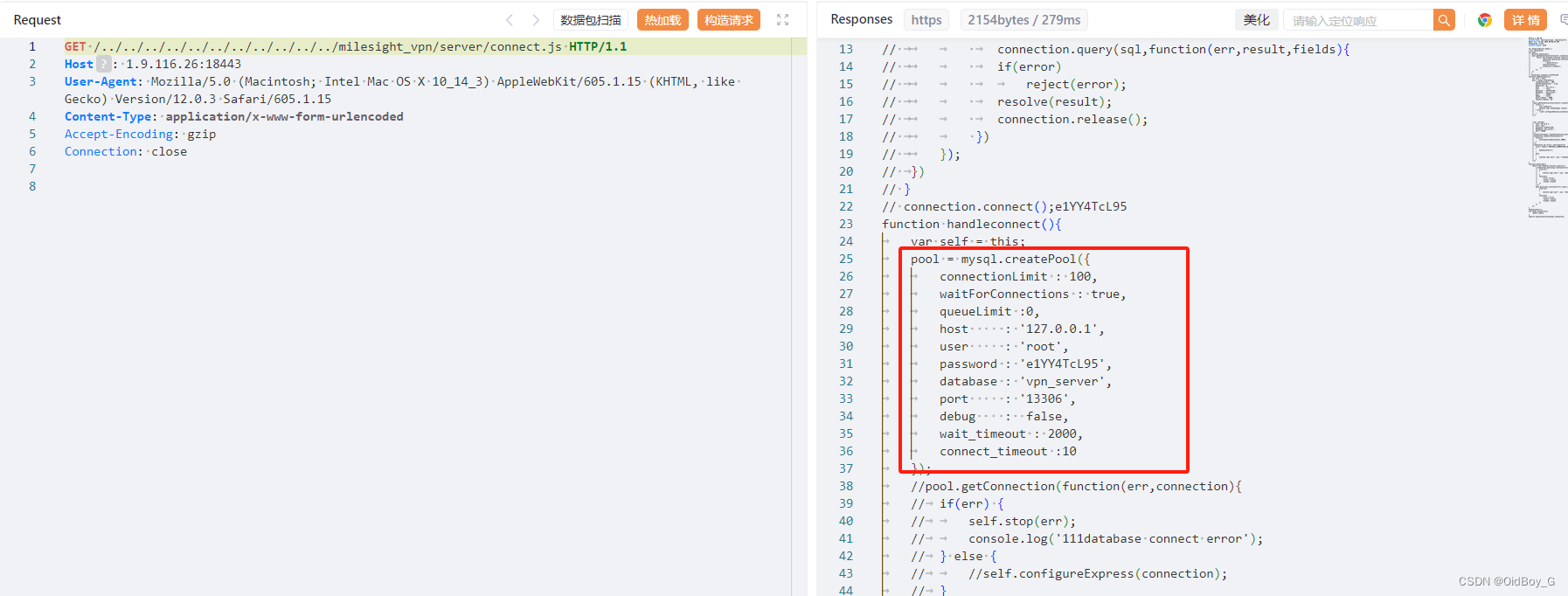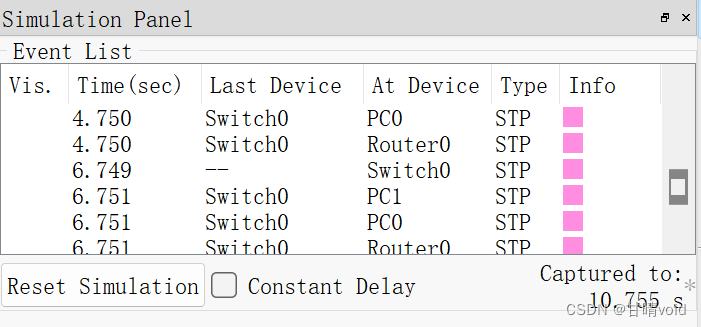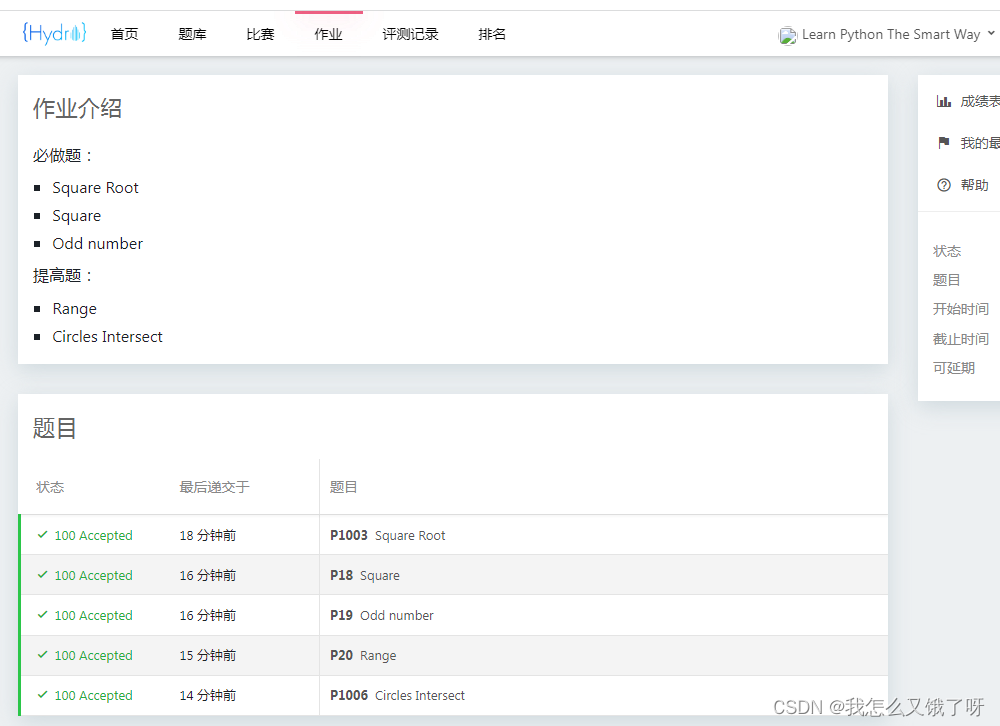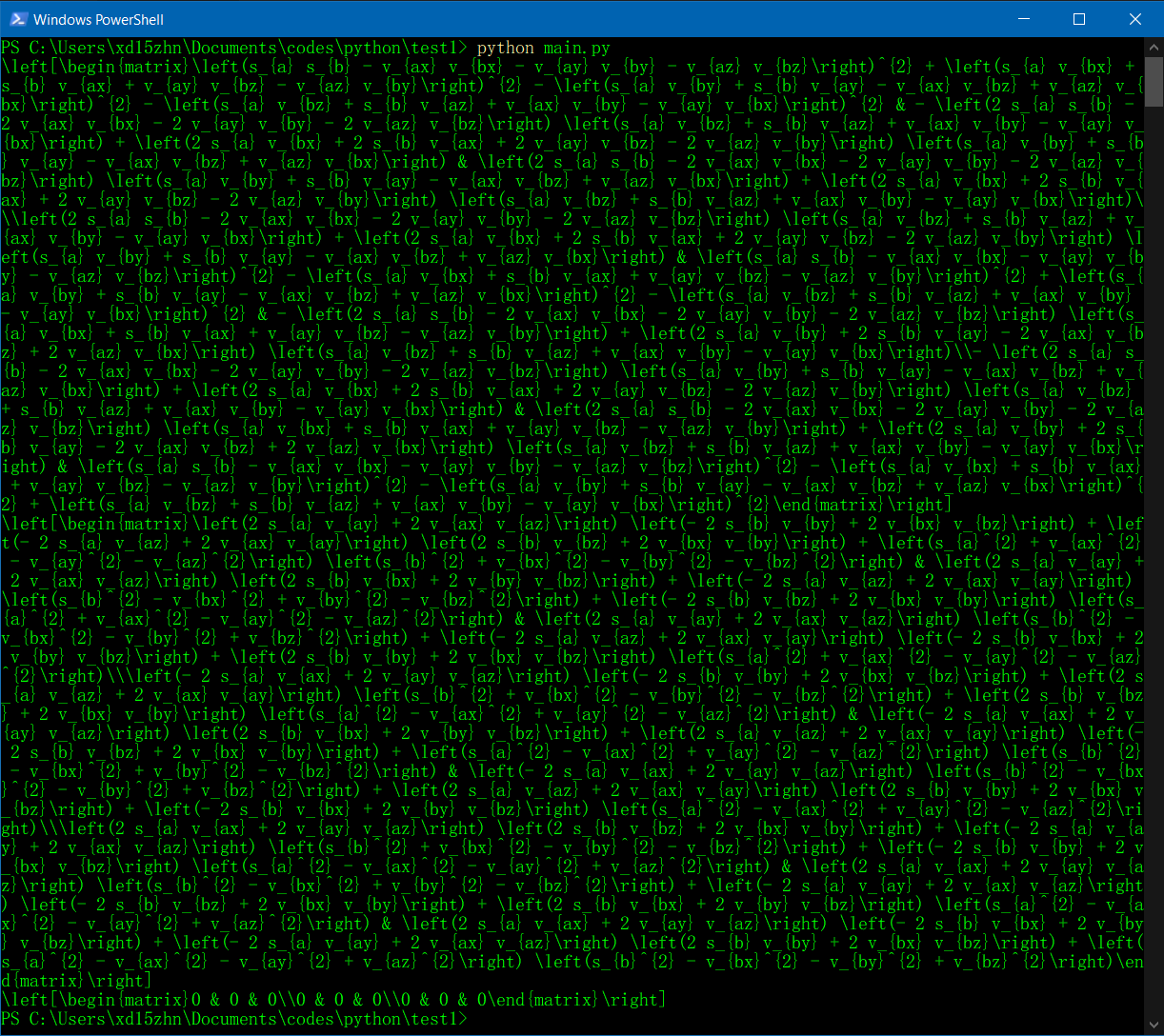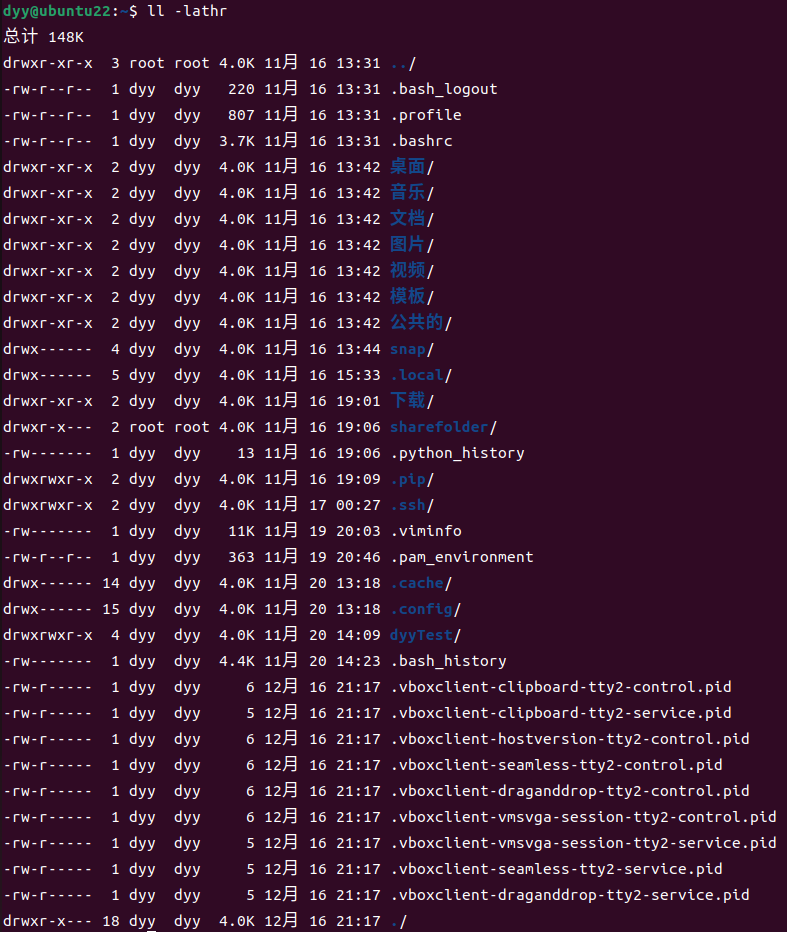大数据技术之Shell(超级详细)
第1章 Shell概述
Shell 是一种脚本语言,用于在操作系统的命令行界面(CLI)下执行命令和脚本。在大数据领域,Shell 脚本常用于编写数据处理和分析任务的自动化脚本,以便快速而有效地处理大规模的数据集。

下面详细介绍 Shell 在大数据技术中的应用。
Shell 脚本编程:Shell 脚本是一种文本文件,其中包含一系列命令和逻辑控制语句。通过编写 Shell 脚本,可以利用 Shell 的强大功能来处理大数据。例如,可以编写循环结构和条件判断语句,实现数据的遍历、筛选和转换。Shell 脚本还支持变量和函数,使得编写复杂的数据处理逻辑更加方便。
数据清洗和转换:在大数据处理中,往往需要对原始数据进行清洗和转换,以便进行后续的分析和建模。Shell 提供了强大的文本处理功能,可以使用各种命令和技巧来处理和转换文本数据。通过 Shell 脚本,可以自动化地执行数据清洗任务,例如去除重复记录、替换无效值、提取特定字段等。
批量处理:Shell 脚本能够批量处理大规模的数据集,因为它可以通过命令行界面一次执行多个命令或任务。在大数据处理中,通过编写 Shell 脚本,可以批量执行数据处理任务、数据导入导出任务和数据分析任务,提高效率和减少工作量。例如,可以编写一个脚本,实现自动化地从源数据库中抽取数据,进行清洗和转换,然后导入到目标数据库中。
任务调度:在大数据处理中,任务调度是非常重要的,因为需要按照特定的时间表和顺序执行不同的数据处理任务。Shell 脚本可以与任务调度工具(如 cron 或 Control-M)集成,实现定时和自动化地执行数据处理任务。通过在 Shell 脚本中设置计划任务,可以实现定期执行数据处理、备份、数据迁移等任务,确保数据处理过程的稳定运行。
系统管理和监控:Shell 脚本在大数据技术中还可以用于系统管理和监控。通过编写脚本,可以自动化管理大数据平台的各个组件和节点。例如,可以编写一个脚本来监控集群的状态,检查节点的可用性和负载情况,并根据需要采取相应的措施。同时,也可以编写脚本来自动化安装和配置大数据组件,提高系统管理的效率。
实际一点,大数据程序员为什么要学习Shell呢?
1)需要看懂运维人员编写的Shell程序。
2)偶尔会编写一些简单Shell程序来管理集群、提高开发效率。

第2章 Shel解析器
(1)Linux提供的Shell解析器有:
[atguigu@hadoop101 ~]$ cat /etc/shells
/bin/sh
/bin/bash
/sbin/nologin
/bin/dash
/bin/tcsh
/bin/csh
(2)bash和sh的关系
[atguigu@hadoop101 bin]$ ll | grep bash
-rwxr-xr-x. 1 root root 941880 5月 11 2016 bash
lrwxrwxrwx. 1 root root 4 5月 27 2017 sh -> bash
(3)Centos默认的解析器是bash
[atguigu@hadoop102 bin]$ echo $SHELL
/bin/bash
第3章 Shell脚本入门
1.脚本格式
脚本以#!/bin/bash开头(指定解析器)
2.第一个Shell脚本:helloworld
(1)需求:创建一个Shell脚本,输出helloworld
(2)案例实操:
[atguigu@hadoop101 datas]$ touch helloworld.sh
[atguigu@hadoop101 datas]$ vi helloworld.sh
在helloworld.sh中输入如下内容
\#!/bin/bash
echo "helloworld"
(3)脚本的常用执行方式
第一种:采用bash或sh+脚本的相对路径或绝对路径(不用赋予脚本+x权限)
sh+脚本的相对路径
[atguigu@hadoop101 datas]$ sh helloworld.sh
Helloworld
sh+脚本的绝对路径
[atguigu@hadoop101 datas]$ sh /home/atguigu/datas/helloworld.sh
helloworld
bash+脚本的相对路径
[atguigu@hadoop101 datas]$ bash helloworld.sh
Helloworld
bash+脚本的绝对路径
[atguigu@hadoop101 datas]$ bash /home/atguigu/datas/helloworld.sh
Helloworld
第二种:采用输入脚本的绝对路径或相对路径执行脚本(必须具有可执行权限+x)
(a)首先要赋予helloworld.sh 脚本的+x权限
[atguigu@hadoop101 datas]$ chmod 777 helloworld.sh
(b)执行脚本
相对路径
[atguigu@hadoop101 datas]$ ./helloworld.sh
Helloworld
绝对路径
[atguigu@hadoop101 datas]$ /home/atguigu/datas/helloworld.sh
Helloworld
注意:第一种执行方法,本质是bash解析器帮你执行脚本,所以脚本本身不需要执行权限。第二种执行方法,本质是脚本需要自己执行,所以需要执行权限。
3.第二个Shell脚本:多命令处理
(1)需求:
在/home/atguigu/目录下创建一个banzhang.txt,在banzhang.txt文件中增加“I love cls”。
(2)案例实操:
[atguigu@hadoop101 datas]$ touch batch.sh
[atguigu@hadoop101 datas]$ vi batch.sh
在batch.sh中输入如下内容
\#!/bin/bash
cd /home/atguigu
touch cls.txt
echo "I love cls" >>cls.txt
第4章 Shell中的变量
4.1 系统****变量
\1. 常用系统变量
H O M E 、 HOME、 HOME、PWD、 S H E L L 、 SHELL、 SHELL、USER等
2.案例实操
(1)查看系统变量的值
[atguigu@hadoop101 datas]$ echo $HOME
/home/atguigu
(2)显示当前Shell中所有变量:set
[atguigu@hadoop101 datas]$ set
BASH=/bin/bash
BASH_ALIASES=()
BASH_ARGC=()
BASH_ARGV=()
4.2 自定义****变量
1.基本语法
(1)定义变量:变量=值
(2)撤销变量:unset 变量
(3)声明静态变量:readonly变量,注意:不能unset
2.变量定义规则
(1)变量名称可以由字母、数字和下划线组成,但是不能以数字开头,环境变量名建议大写。
(2)等号两侧不能有空格
(3)在bash中,变量默认类型都是字符串类型,无法直接进行数值运算。
(4)变量的值如果有空格,需要使用双引号或单引号括起来。
3.案例实操
(1)定义变量A
[atguigu@hadoop101 datas]$ A=5
[atguigu@hadoop101 datas]$ echo $A
5
(2)给变量A重新赋值
[atguigu@hadoop101 datas]$ A=8
[atguigu@hadoop101 datas]$ echo $A
8
(3)撤销变量A
[atguigu@hadoop101 datas]$ unset A
[atguigu@hadoop101 datas]$ echo $A
(4)声明静态的变量B=2,不能unset
[atguigu@hadoop101 datas]$ readonly B=2
[atguigu@hadoop101 datas]$ echo $B
2
[atguigu@hadoop101 datas]$ B=9
-bash: B: readonly variable
(5)在bash中,变量默认类型都是字符串类型,无法直接进行数值运算
[atguigu@hadoop102 ~]$ C=1+2
[atguigu@hadoop102 ~]$ echo $C
1+2
(6)变量的值如果有空格,需要使用双引号或单引号括起来
[atguigu@hadoop102 ~]$ D=I love banzhang
-bash: world: command not found
[atguigu@hadoop102 ~]$ D="I love banzhang"
[atguigu@hadoop102 ~]$ echo $A
I love banzhang
(7)可把变量提升为全局环境变量,可供其他Shell程序使用
export 变量名
[atguigu@hadoop101 datas]$ vim helloworld.sh
在helloworld.sh文件中增加echo $B
#!/bin/bash
echo “helloworld”
echo $B
[atguigu@hadoop101 datas]$ ./helloworld.sh
Helloworld
发现并没有打印输出变量B的值。
[atguigu@hadoop101 datas]$ export B
[atguigu@hadoop101 datas]$ ./helloworld.sh
helloworld
2
4.3 特殊变量:$n
1.基本语法
$n (功能描述:n为数字,$0代表该脚本名称,$1- 9 代表第一到第九个参数,十以上的参数,十以上的参数需要用大括号包含,如 9代表第一到第九个参数,十以上的参数,十以上的参数需要用大括号包含,如 9代表第一到第九个参数,十以上的参数,十以上的参数需要用大括号包含,如{10})
2.案例实操
(1)输出该脚本文件名称、输入参数1和输入参数2 的值
[atguigu@hadoop101 datas]$ touch parameter.sh
[atguigu@hadoop101 datas]$ vim parameter.sh
#!/bin/bash
echo “$0 $1 $2”
[atguigu@hadoop101 datas]$ chmod 777 parameter.sh
[atguigu@hadoop101 datas]$ ./parameter.sh cls xz
./parameter.sh cls xz
4.4 特殊变量:$#
1.基本语法
$# (功能描述:获取所有输入参数个数,常用于循环)。
2.案例实操
(1)获取输入参数的个数
[atguigu@hadoop101 datas]$ vim parameter.sh
#!/bin/bash
echo “$0 $1 $2”
echo $#
[atguigu@hadoop101 datas]$ chmod 777 parameter.sh
[atguigu@hadoop101 datas]$ ./parameter.sh cls xz
parameter.sh cls xz
2
4.5 特殊变量:$ 、@
1.基本语法
$(功能描述:这个变量代表命令行中所有的参数,$把所有的参数看成一个整体)
@ (功能描述:这个变量也代表命令行中所有的参数,不过 @ (功能描述:这个变量也代表命令行中所有的参数,不过 @(功能描述:这个变量也代表命令行中所有的参数,不过@把每个参数区分对待)
2.案例实操
(1)打印输入的所有参数
[atguigu@hadoop101 datas]$ vim parameter.sh
#!/bin/bash
echo “$0 $1 $2”
echo $#
echo $*
echo $@
[atguigu@hadoop101 datas]$ bash parameter.sh 1 2 3
parameter.sh 1 2
3
1 2 3
1 2 3
4.6 特殊变量:$?
1.基本语法
$? (功能描述:最后一次执行的命令的返回状态。如果这个变量的值为0,证明上一个命令正确执行;如果这个变量的值为非0(具体是哪个数,由命令自己来决定),则证明上一个命令执行不正确了。)
2.案例实操
(1)判断helloworld.sh脚本是否正确执行
[atguigu@hadoop101 datas]$ ./helloworld.sh
hello world
[atguigu@hadoop101 datas]$ echo $?
0
第5章 运算符
1.基本语法
(1)“ ( ( 运算式 ) ) ”或“ ((运算式))”或“ ((运算式))”或“[运算式]”
(2)expr + , - , *, /, % 加,减,乘,除,取余
注意:expr运算符间要有空格
2.案例实操:
(1)计算3+2的值
[atguigu@hadoop101 datas]$ expr 2 + 3
5
(2)计算3-2的值
[atguigu@hadoop101 datas]$ expr 3 - 2
1
(3)计算(2+3)X4的值
(a)expr一步完成计算
[atguigu@hadoop101 datas]$ expr expr 2 + 3 * 4
20
(b)采用$[运算式]方式
[atguigu@hadoop101 datas]# S=$[(2+3)*4]
[atguigu@hadoop101 datas]# echo $S
第6章 条件判断
1.基本语法
[ condition ](注意condition前后要有空格)
注意:条件非空即为true,[ atguigu ]返回true,[] 返回false。
\2. 常用判断条件
(1)两个整数之间比较
= 字符串比较
-lt 小于(less than) -le 小于等于(less equal)
-eq 等于(equal) -gt 大于(greater than)
-ge 大于等于(greater equal) -ne 不等于(Not equal)
(2)按照文件权限进行判断
-r 有读的权限(read) -w 有写的权限(write)
-x 有执行的权限(execute)
(3)按照文件类型进行判断
-f 文件存在并且是一个常规的文件(file)
-e 文件存在(existence) -d 文件存在并是一个目录(directory)
3.案例实操
(1)23是否大于等于22
[atguigu@hadoop101 datas]$ [ 23 -ge 22 ]
[atguigu@hadoop101 datas]$ echo $?
0
(2)helloworld.sh是否具有写权限
[atguigu@hadoop101 datas]$ [ -w helloworld.sh ]
[atguigu@hadoop101 datas]$ echo $?
0
(3)/home/atguigu/cls.txt目录中的文件是否存在
[atguigu@hadoop101 datas]$ [ -e /home/atguigu/cls.txt ]
[atguigu@hadoop101 datas]$ echo $?
1
(4)多条件判断(&& 表示前一条命令执行成功时,才执行后一条命令,|| 表示上一条命令执行失败后,才执行下一条命令)
[atguigu@hadoop101 ~]$ [ condition ] && echo OK || echo notok
OK
[atguigu@hadoop101 datas]$ [ condition ] && [ ] || echo notok
notok
第7章 流程控制**(重点)**
7.1 if 判断
1.基本语法
if [ 条件判断式 ];then
程序
fi
或者
if [ 条件判断式 ]
then
程序
fi
注意事项:
(1)[ 条件判断式 ],中括号和条件判断式之间必须有空格
(2)if后要有空格
2.案例实操
(1)输入一个数字,如果是1,则输出banzhang zhen shuai,如果是2,则输出cls zhen mei,如果是其它,什么也不输出。
[atguigu@hadoop101 datas]$ touch if.sh
[atguigu@hadoop101 datas]$ vim if.sh
#!/bin/bash
if [ $1 -eq “1” ]
then
echo “banzhang zhen shuai”
elif [ $1 -eq “2” ]
then
echo “cls zhen mei”
fi
[atguigu@hadoop101 datas]$ chmod 777 if.sh
[atguigu@hadoop101 datas]$ ./if.sh 1
banzhang zhen shuai
7.2 case 语句
1.基本语法
case $变量名 in
“值1”)
如果变量的值等于值1,则执行程序1
;;
“值2”)
如果变量的值等于值2,则执行程序2
;;
…省略其他分支…
*)
如果变量的值都不是以上的值,则执行此程序
;;
esac
注意事项:
\1) case行尾必须为单词“in”,每一个模式匹配必须以右括号“)”结束。
\2) 双分号“*;;*”表示命令序列结束,相当于java中的break。
\3) 最后的“*)”表示默认模式,相当于java中的default。
2.案例实操
(1)输入一个数字,如果是1,则输出banzhang,如果是2,则输出cls,如果是其它,输出renyao。
[atguigu@hadoop101 datas]$ touch case.sh
[atguigu@hadoop101 datas]$ vim case.sh
!/bin/bash
case $1 in
“1”)
echo “banzhang”
;;
“2”)
echo “cls”
;;
*)
echo “renyao”
;;
esac
[atguigu@hadoop101 datas]$ chmod 777 case.sh
[atguigu@hadoop101 datas]$ ./case.sh 1
1
7.3 for 循环
1.基本语法1
for (( 初始值;循环控制条件;变量变化 ))
do
程序
done
2.案例实操
(1)从1加到100
[atguigu@hadoop101 datas]$ touch for1.sh
[atguigu@hadoop101 datas]$ vim for1.sh
#!/bin/bash
s=0
for((i=0;i<=100;i++))
do
s= [ [ [s+$i]
done
echo $s
[atguigu@hadoop101 datas]$ chmod 777 for1.sh
[atguigu@hadoop101 datas]$ ./for1.sh
“5050”
3.基本语法2
for 变量 in 值1 值2 值3…
do
程序
done
4.案例实操
(1)打印所有输入参数
[atguigu@hadoop101 datas]$ touch for2.sh
[atguigu@hadoop101 datas]$ vim for2.sh
#!/bin/bash
#打印数字
for i in $*
do
echo "ban zhang love $i "
done
[atguigu@hadoop101 datas]$ chmod 777 for2.sh
[atguigu@hadoop101 datas]$ bash for2.sh cls xz bd
ban zhang love cls
ban zhang love xz
ban zhang love bd
(2)比较 ∗ 和 *和 ∗和@区别
(a) ∗ 和 *和 ∗和@都表示传递给函数或脚本的所有参数,不被双引号“”包含时,都以$1 2 … 2 … 2…n的形式输出所有参数。
[atguigu@hadoop101 datas]$ touch for.sh[atguigu@hadoop101 datas]$ vim for.sh #!/bin/bash for i in $*do echo "ban zhang love $i "done for j in $@do echo "ban zhang love j " d o n e [ a t g u i g u @ h a d o o p 101 d a t a s ] j"done [atguigu@hadoop101 datas] j"done[atguigu@hadoop101datas] bash for.sh cls xz bdban zhang love cls ban zhang love xz ban zhang love bd ban zhang love clsban zhang love xzban zhang love bd
(b)当它们被双引号“”包含时,“$*”会将所有的参数作为一个整体,以“$1 2 … 2 … 2…n”的形式输出所有参数;“$@”会将各个参数分开,以“$1” “ 2 ” … ” 2”…” 2”…”n”的形式输出所有参数。
[atguigu@hadoop101 datas]$ vim for.sh
#!/bin/bash
for i in “$*”
#$*中的所有参数看成是一个整体,所以这个for循环只会循环一次
do
echo “ban zhang love $i”
done
for j in “$@”
# @ 中的每个参数都看成是独立的,所以“ @中的每个参数都看成是独立的,所以“ @中的每个参数都看成是独立的,所以“@”中有几个参数,就会循环几次
do
echo “ban zhang love $j”
done
[atguigu@hadoop101 datas]$ chmod 777 for.sh
[atguigu@hadoop101 datas]$ bash for.sh cls xz bd
ban zhang love cls xz bd
ban zhang love cls
ban zhang love xz
ban zhang love bd
7.4 while 循环
1.基本语法
while [ 条件判断式 ]
do
程序
done
2.案例实操
(1)从1加到100
[atguigu@hadoop101 datas]$ touch while.sh
[atguigu@hadoop101 datas]$ vim while.sh
#!/bin/bash
s=0
i=1
while [ $i -le 100 ]
do
s= [ [ [s+$i]
i= [ [ [i+1]
done
echo $s
[atguigu@hadoop101 datas]$ chmod 777 while.sh
[atguigu@hadoop101 datas]$ ./while.sh
5050
第8章 read读取控制台输入
1.基本语法
read(选项)(参数)
选项:
-p:指定读取值时的提示符;
-t:指定读取值时等待的时间(秒)。
参数
变量:指定读取值的变量名
2.案例实操
(1)提示7秒内,读取控制台输入的名称
[atguigu@hadoop101 datas]$ touch read.sh
[atguigu@hadoop101 datas]$ vim read.sh
\#!/bin/bash
read -t 7 -p "Enter your name in 7 seconds " NAME
echo $NAME
[atguigu@hadoop101 datas]$ ./read.sh
Enter your name in 7 seconds xiaoze
xiaoze
第9章 函数
9.1 系统函数
1.basename基本语法
basename [string / pathname] [suffix] (功能描述:basename命令会删掉所有的前缀包括最后一个(‘/’)字符,然后将字符串显示出来。
选项:
suffix为后缀,如果suffix被指定了,basename会将pathname或string中的suffix去掉。
2.案例实操
(1)截取该/home/atguigu/banzhang.txt路径的文件名称
[atguigu@hadoop101 datas]$ basename /home/atguigu/banzhang.txt
banzhang.txt
[atguigu@hadoop101 datas]$ basename /home/atguigu/banzhang.txt .txt
banzhang
- dirname基本语法
dirname 文件绝对路径 (功能描述:从给定的包含绝对路径的文件名中去除文件名(非目录的部分),然后返回剩下的路径(目录的部分))
4.案例实操
(1)获取banzhang.txt文件的路径
[atguigu@hadoop101 ~]$ dirname /home/atguigu/banzhang.txt
/home/atguigu
9.2 自定义函数
1.基本语法
[ function ] funname[()]
{
Action;
[return int;]
}
funname
2.经验技巧
(1)必须在调用函数地方之前,先声明函数,shell脚本是逐行运行。不会像其它语言一样先编译。
(2)函数返回值,只能通过$?系统变量获得,可以显示加:return返回,如果不加,将以最后一条命令运行结果,作为返回值。return后跟数值n(0-255)
3.案例实操
(1)计算两个输入参数的和
[atguigu@hadoop101 datas]$ touch fun.sh
[atguigu@hadoop101 datas]$ vim fun.sh
\#!/bin/bash
function sum()
{
s=0
s=$[ $1 + $2 ]
echo "$s"
}
read -p "Please input the number1: " n1;
read -p "Please input the number2: " n2;
sum $n1 $n2;
[atguigu@hadoop101 datas]$ chmod 777 fun.sh
[atguigu@hadoop101 datas]$ ./fun.sh
Please input the number1: 2
Please input the number2: 5
7
第10章 Shell工具(重点)
10**.1** cut
cut的工作就是“剪”,具体的说就是在文件中负责剪切数据用的。cut 命令从文件的每一行剪切字节、字符和字段并将这些字节、字符和字段输出。
1.基本用法
cut [选项参数] filename
说明:默认分隔符是制表符
2.选项参数说明
表1-55
| 选项参数 | 功能 |
|---|---|
| -f | 列号,提取第几列 |
| -d | 分隔符,按照指定分隔符分割列 |
3.案例实操
(0)数据准备
[atguigu@hadoop101 datas]$ touch cut.txt
[atguigu@hadoop101 datas]$ vim cut.txt
dong shen
guan zhen
wo wo
lai lai
le le
(1)切割cut.txt第一列
[atguigu@hadoop101 datas]$ cut -d " " -f 1 cut.txt
dong
guan
wo
lai
le
(2)切割cut.txt第二、三列
[atguigu@hadoop101 datas]$ cut -d " " -f 2,3 cut.txt
shen
zhen
wo
lai
le
(3)在cut.txt文件中切割出guan
[atguigu@hadoop101 datas]$ cat cut.txt | grep “guan” | cut -d " " -f 1
guan
(4)选取系统PATH变量值,第2个“:”开始后的所有路径:
[atguigu@hadoop101 datas]$ echo $PATH
/usr/lib64/qt-3.3/bin:/usr/local/bin:/bin:/usr/bin:/usr/local/sbin:/usr/sbin:/sbin:/home/atguigu/bin
[atguigu@hadoop102 datas]$ echo $PATH | cut -d: -f 2-
/usr/local/bin:/bin:/usr/bin:/usr/local/sbin:/usr/sbin:/sbin:/home/atguigu/bin
(5)切割ifconfig 后打印的IP地址
[atguigu@hadoop101 datas]$ ifconfig eth0 | grep “inet addr” | cut -d: -f 2 | cut -d" " -f1
192.168.1.102
10.2 sed
sed是一种流编辑器,它一次处理一行内容。处理时,把当前处理的行存储在临时缓冲区中,称为“模式空间”,接着用sed命令处理缓冲区中的内容,处理完成后,把缓冲区的内容送往屏幕。接着处理下一行,这样不断重复,直到文件末尾。文件内容并没有改变,除非你使用重定向存储输出。
\1. 基本用法
sed [选项参数] ‘command’ filename
\2. 选项参数说明
表1-56
| 选项参数 | 功能 |
|---|---|
| -e | 直接在指令列模式上进行sed的动作编辑。 |
\3. 命令功能描述
表1-57
| 命令 | 功能描述 |
|---|---|
| a | 新增,a的后面可以接字串,在下一行出现 |
| d | 删除 |
| s | 查找并替换 |
\4. 案例实操
(0)数据准备
[atguigu@hadoop102 datas]$ touch sed.txt
[atguigu@hadoop102 datas]$ vim sed.txt
dong shen
guan zhen
wo wo
lai lai
le le
(1)将“mei nv”这个单词插入到sed.txt第二行下,打印。
[atguigu@hadoop102 datas]$ sed '2a mei nv' sed.txt
dong shen
guan zhen
mei nv
wo wo
lai lai
le le
[atguigu@hadoop102 datas]$ cat sed.txt
dong shen
guan zhen
wo wo
lai lai
le le
注意:文件并没有改变
(2)删除sed.txt文件所有包含wo的行
[atguigu@hadoop102 datas]$ sed '/wo/d' sed.txt
dong shen
guan zhen
lai lai
le le
(3)将sed.txt文件中wo替换为ni
[atguigu@hadoop102 datas]$ sed 's/wo/ni/g' sed.txt
dong shen
guan zhen
ni ni
lai lai
le le
注意:‘g’表示global,全部替换
(4)将sed.txt文件中的第二行删除并将wo替换为ni
[atguigu@hadoop102 datas]$ sed -e '2d' -e 's/wo/ni/g' sed.txt
dong shen
ni ni
lai lai
le le
10.3 awk
一个强大的文本分析工具,把文件逐行的读入,以空格为默认分隔符将每行切片,切开的部分再进行分析处理。
\1. 基本用法
awk [选项参数] ‘pattern1{action1} pattern2{action2}…’ filename
pattern:表示AWK在数据中查找的内容,就是匹配模式
action:在找到匹配内容时所执行的一系列命令
\2. 选项参数说明
表1-55
| 选项参数 | 功能 |
|---|---|
| -F | 指定输入文件折分隔符 |
| -v | 赋值一个用户定义变量 |
\3. 案例实操
(0)数据准备
[atguigu@hadoop102 datas]$ sudo cp /etc/passwd ./
(1)搜索passwd文件以root关键字开头的所有行,并输出该行的第7列。
[atguigu@hadoop102 datas]$ awk -F: '/^root/{print $7}' passwd
/bin/bash
(2)搜索passwd文件以root关键字开头的所有行,并输出该行的第1列和第7列,中间以“,”号分割。
[atguigu@hadoop102 datas]$ awk -F: '/^root/{print $1","$7}' passwd
root,/bin/bash
注意:只有匹配了pattern的行才会执行action
(3)只显示/etc/passwd的第一列和第七列,以逗号分割,且在所有行前面添加列名user,shell在最后一行添加"dahaige,/bin/zuishuai"。
[atguigu@hadoop102 datas]$ awk -F : 'BEGIN{print "user, shell"} {print $1","$7} END{print "dahaige,/bin/zuishuai"}' passwd
user, shell
root,/bin/bash
bin,/sbin/nologin
。。。
atguigu,/bin/bash
dahaige,/bin/zuishuai
注意:BEGIN 在所有数据读取行之前执行;END 在所有数据执行之后执行。
(4)将passwd文件中的用户id增加数值1并输出
[atguigu@hadoop102 datas]$ awk -v i=1 -F: '{print $3+i}' passwd
1
2
3
4
\4. awk的内置变量
表1-56
| 变量 | 说明 |
|---|---|
| FILENAME | 文件名 |
| NR | 已读的记录数 |
| NF | 浏览记录的域的个数(切割后,列的个数) |
\5. 案例实操
(1)统计passwd文件名,每行的行号,每行的列数
[atguigu@hadoop102 datas]$ awk -F: '{print "filename:" FILENAME ", linenumber:" NR ",columns:" NF}' passwd
filename:passwd, linenumber:1,columns:7
filename:passwd, linenumber:2,columns:7
filename:passwd, linenumber:3,columns:7
(2)切割IP
[atguigu@hadoop102 datas]$ ifconfig eth0 | grep "inet addr" | awk -F: '{print $2}' | awk -F " " '{print $1}'
192.168.1.102
(3)查询sed.txt中空行所在的行号
[atguigu@hadoop102 datas]$ awk '/^$/{print NR}' sed.txt
5
10.4 sort
sort命令是在Linux里非常有用,它将文件进行排序,并将排序结果标准输出。
\1. 基本语法
sort(选项)(参数)
表1-57
| 选项 | 说明 |
|---|---|
| -n | 依照数值的大小排序 |
| -r | 以相反的顺序来排序 |
| -t | 设置排序时所用的分隔字符 |
| -k | 指定需要排序的列 |
参数:指定待排序的文件列表
\2. 案例实操
(0)数据准备
[atguigu@hadoop102 datas]$ touch sort.sh
[atguigu@hadoop102 datas]$ vim sort.sh
bb:40:5.4
bd:20:4.2
xz:50:2.3
cls:10:3.5
ss:30:1.6
(1)按照“:”分割后的第三列倒序排序。
[atguigu@hadoop102 datas]$ sort -t : -nrk 3 sort.sh
bb:40:5.4
bd:20:4.2
cls:10:3.5
xz:50:2.3
ss:30:1.6
第11章 企业真实面试题(重点)
11.1 京东
问题1:使用Linux命令查询file1中空行所在的行号
答案:
[atguigu@hadoop102 datas]$ awk '/^$/{print NR}' sed.txt
5
问题2:有文件chengji.txt内容如下:
张三 40
李四 50
王五 60
使用Linux命令计算第二列的和并输出
[atguigu@hadoop102 datas]$ cat chengji.txt | awk -F " " '{sum+=$2} END{print sum}'
150
**11.**2 搜狐&和讯网
问题1:Shell脚本里如何检查一个文件是否存在?如果不存在该如何处理?
\#!/bin/bash
if [ -f file.txt ]; then
echo "文件存在!"
else
echo "文件不存在!"
fi
**11.**3 新浪
问题1:用shell写一个脚本,对文本中无序的一列数字排序
[root@CentOS6-2 ~]# cat test.txt
9
8
7
6
5
4
3
2
10
1
[root@CentOS6-2 ~]# sort -n test.txt|awk '{a+=$0;print $0}END{print "SUM="a}'
1
2
3
4
5
6
7
8
9
10
SUM=55
11.3 金和网络
问题1:请用shell脚本写出查找当前文件夹(/home)下所有的文本文件内容中包含有字符”shen”的文件名称
[atguigu@hadoop102 datas]$ grep -r "shen" /home | cut -d ":" -f 1
/home/atguigu/datas/sed.txt
/home/atguigu/datas/cut.txt
的列 |
参数:指定待排序的文件列表
\2. 案例实操
(0)数据准备
[atguigu@hadoop102 datas]$ touch sort.sh
[atguigu@hadoop102 datas]$ vim sort.sh
bb:40:5.4
bd:20:4.2
xz:50:2.3
cls:10:3.5
ss:30:1.6
(1)按照“:”分割后的第三列倒序排序。
[atguigu@hadoop102 datas]$ sort -t : -nrk 3 sort.sh
bb:40:5.4
bd:20:4.2
cls:10:3.5
xz:50:2.3
ss:30:1.6
第11章 企业真实面试题(重点)
11.1 京东
问题1:使用Linux命令查询file1中空行所在的行号
答案:
[atguigu@hadoop102 datas]$ awk '/^$/{print NR}' sed.txt
5
问题2:有文件chengji.txt内容如下:
张三 40
李四 50
王五 60
使用Linux命令计算第二列的和并输出
[atguigu@hadoop102 datas]$ cat chengji.txt | awk -F " " '{sum+=$2} END{print sum}'
150
**11.**2 搜狐&和讯网
问题1:Shell脚本里如何检查一个文件是否存在?如果不存在该如何处理?
\#!/bin/bash
if [ -f file.txt ]; then
echo "文件存在!"
else
echo "文件不存在!"
fi
11.3 新浪
问题1:用shell写一个脚本,对文本中无序的一列数字排序
[root@CentOS6-2 ~]# cat test.txt
9
8
7
6
5
4
3
2
10
1
[root@CentOS6-2 ~]# sort -n test.txt|awk '{a+=$0;print $0}END{print "SUM="a}'
1
2
3
4
5
6
7
8
9
10
SUM=55

总的来说,Shell 在大数据技术中有着广泛的应用。通过编写 Shell 脚本,可以进行数据处理、数据清洗和转换、批量处理、任务调度以及系统管理和监控等任务。Shell 的强大文本处理能力和脚本编程特性,使得它成为处理大数据和自动化任务的重要工具。掌握 Shell 编程技巧,将有助于在大数据领域提高工作效率和数据处理的灵活性。

